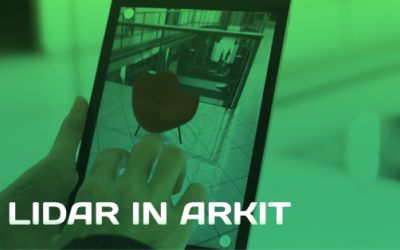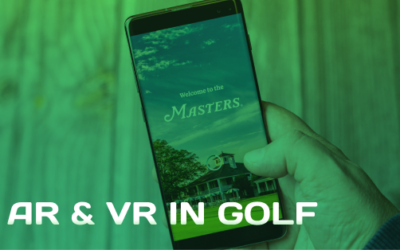The popular game has changed your life, whether you play it or not.
Pokemon Go, the jaw-droppingly popular mobile game, featuring augmented reality technology and GPS exploration, has officially taken numerous countries by storm. With additional releases about to go live around the world, this is just the beginning.
According to SimilarWeb, as of July 8th, users were spending more time using the app than WhatsApp, Instagram, Snapchat and Facebook’s Messenger. Since then, it’s also managed to overtake Twitter and even usage of the Facebook app itself. You read that right. People are spending more time hunting for augmented reality Pokemon on their phones than they are on Facebook.
Now days, it’s rare (to say the least) for any app to, in just one week, eclipse one of these household names — let alone the entire ‘dream team’ of mobile apps all at once.
So, what the heck is going on?
To put it frankly: The release of Pokemon Go has completely redefined, for many, the ways in which we experience and engage with the world around us. It’s all thanks to an incredibly powerful technology called augmented reality.
For years, teams like Gravity Jack have been watching, developing and leading the charge on the growth of augmented reality (often, referred to as just ‘AR’). AR, along with its sister technology, Virtual Reality (VR), has long been anticipated as the tech that will majorly revolutionize the way that digital content is found, engaged with and experienced. As digital screens and wearable technology become more prevalent, the seamless interaction that these devices are able to have with the real world becomes increasingly important.
The solution? Augmented Reality — and Pokemon Go just lit the fuse.
What is Augmented Reality?
 Augmented reality is a technology that allows for the display of digital content within the real world. Right now, it’s most commonly triggered using a computer that is equipped with a camera (like a smartphone), but AR is widely anticipated to become a cornerstone of the growing ‘wearables’ industry.
Augmented reality is a technology that allows for the display of digital content within the real world. Right now, it’s most commonly triggered using a computer that is equipped with a camera (like a smartphone), but AR is widely anticipated to become a cornerstone of the growing ‘wearables’ industry.
This may all seem a bit ‘technical,’ but it’s really quite simple:
When you’re playing Pokemon Go, the Pokemon characters are digital (not real, computerized 3D). Your smartphone’s camera is showing you a live view of the real world, with these digital characters integrated into it. It’s like they’re really there. That’s it! Digital stuff playing nice with the real world around you = Augmented Reality.
Whether you play it or not, Pokemon Go has changed the rest of your life.
While AR has been a buzzword for years with industrial companies, marketing teams, developers and technology enthusiasts, there has always been a need for one major breakthrough — a frictionless use case, bridging the early adopters of the technology with the masses. Once found, it would create a general public understanding for the technology’s capabilities, providing an opportunity for open conversation and a realization for other possible uses.
In order to understand AR, the masses needed a simple way to ‘dip their toes’ in the waters and experience how it works for themselves. Pokemon Go has provided the perfect, widespread (to say the least) opportunity for this, and it’s proving what we’ve always anticipated — people love AR!
There is always a curve when it comes to the ‘adoption’ of new technology. People must learn about it, understand how it works, become comfortable with it and, ultimately, decide ‘Hey, this is better than the way I’ve done things before.’ It’s a curve that every single piece of technology available today has had to go through — from the printing press, to the microwave, to the personal computer, smartphones and smartwatches.
The first major use of the microwave was for astronauts, but it soon after became a household staple. The most widespread initial use of augmented reality was for a Pokemon game…but the opportunities for expansion are truly endless.
It’s revolutionizing the way we interact with the world.
Whether it’s the ability to capture a photo with your favorite cuddly Pokemon or digital callouts showing the latest and greatest features of an automobile’s interior, augmented reality offers a very real solution for the future of marketing, industrial efficiency, education and nearly every other vertical imaginable.
Here are just a few examples that our team is making possible today:
 Bringing education to life, with 3D learning experiences, triggered by geographic location, an image in a textbook or even a three dimensional product itself. Recently, Gravity Jack created D-Day: June 6, 1944 as a way to bring a digital reenactment of the Normandy landing to life for a brand new generation, over a map of the region.
Bringing education to life, with 3D learning experiences, triggered by geographic location, an image in a textbook or even a three dimensional product itself. Recently, Gravity Jack created D-Day: June 6, 1944 as a way to bring a digital reenactment of the Normandy landing to life for a brand new generation, over a map of the region.
- Making marketing a personal, engaging experience — allowing for users to see, customize, interact with and explore the features of a product. This can be done at any level — from a golf club and it’s customization settings, to the exterior of the latest luxury SUV.
- Creating a better, more experiential sales process — allowing for sales reps to bring incredibly heavy machinery with them, easily, wherever they go or medical professionals to see how new equipment will fit and work within their unique office space.
It’s enough to make us all consider, “How could augmented reality change the way that people interact with, understand and experience what I do?”
While Pokemon Go is seen by many as just a game, the truth is that it’s far more than that. It is having a direct impact on the way that the masses digest information.
Gravity Jack is incredibly excited to see the incredible success of Pokemon Go. It’s proof that what we’re working on daily is, truly, The Future Experience™.
 Bringing education to life
Bringing education to life




